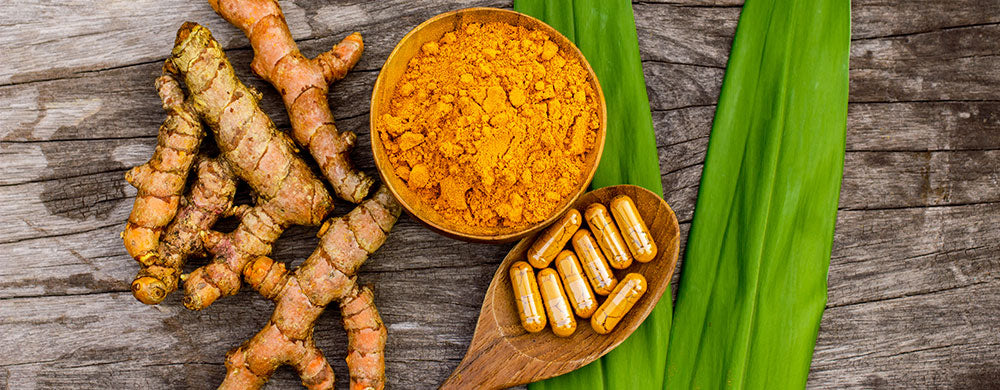Insulin resistance: This diet can help

Insulin resistance affects more and more people in the western world and is the cause of many diseases such as type 2 diabetes. In this article you will learn what role our diet plays in this and what you can do against insulin resistance.
Table of contents
- What is insulin resistance?
- How does insulin resistance manifest itself?
- How do you determine insulin resistance?
- How does insulin resistance occur?
- What are the consequences of insulin resistance?
- What is the difference between insulin resistance and diabetes?
- Can insulin resistance be reversed?
- How should I change my diet if I have insulin resistance?
- Which foods should you avoid if you have insulin resistance?
- What else can I do if I have insulin resistance?
- Conclusion
What is insulin resistance?
Insulin resistance is a reduced response of the cells of the liver, muscles and fat tissue to the hormone insulin.
Insulin fulfils a variety of tasks in the human body. One of the best-known tasks of insulin is lowering blood sugar levels. Insulin transports sugar into our cells - mainly in the liver and muscles. There, our cells use the sugar, also known as glucose, to produce energy in the form of adenosine triphosphate (ATP). In addition, excess energy in the form of carbohydrates is converted into glycogen (carbohydrate storage) and fat.
Insulin is produced in the pancreas in the beta cells of the islets of Langerhans. The blood sugar level is constantly monitored.
How does insulin resistance manifest itself?
Symptoms of insulin resistance:
- dry skin
- Visual disturbances
- impaired wound healing
- Tiredness, exhaustion
- Muscle weakness
- Difficulty concentrating
- dizziness
How do you determine insulin resistance?
Hyperinsulinemic-euglycemic glucose clamp technique.
There is no general test for insulin resistance. The gold standard for measuring insulin resistance is the hyperinsulinemic-euglycemic glucose clamp technique. It measures how well an individual metabolizes glucose and how sensitive the person is to insulin. The plasma insulin concentration is increased acutely by a continuous infusion of insulin and maintained at a value of 100 μU/ml. Meanwhile, the plasma glucose concentration is kept constant by a glucose infusion. This can be used to determine the insulin sensitivity of the cells.
Oral glucose tolerance test
In practice, however, an oral glucose tolerance test is often used. First, 75 grams of glucose (grape sugar) are administered. One and two hours later, the blood sugar and insulin concentration in the blood are measured. The higher the insulin level in the blood, the higher the insulin resistance. The oral glucose tolerance test can usually be carried out by your family doctor or a nutritionist. Medical supervision is required to ensure that the test is carried out correctly. The test has been part of the maternity guidelines since 2012. This means that the oral glucose tolerance test is a service provided by statutory health insurance companies.
How does insulin resistance occur?
The exact causes of insulin resistance are still being researched. However, it is known that insulin resistance can arise primarily as a result of a diet rich in carbohydrates and high sugar consumption. This eating behavior leads to an increased insulin level in the blood, as foods with a high glycemic index cause blood sugar levels to rise quickly. If the body's cells cannot absorb enough insulin, this is referred to as insulin resistance. The exact molecular causes of insulin resistance are currently still being researched.
However, excess body fat and genetic factors also play a role. Lack of physical activity can also increase the risk of insulin resistance. If there is a family history of diabetes, the risk is even higher. Diseases such as polycystic ovary syndrome are also associated with insulin resistance. Diet also plays a key role in insulin resistance. Sugary foods with a high glycemic index, a high proportion of fat and fructose in the diet, and a low proportion of omega-3 fatty acids and fiber are associated with an increased risk of insulin resistance. (1)
What are the consequences of insulin resistance?
The impaired absorption of glucose into the cells can lead to hyperglycemia. The primary consequence of insulin resistance is type 2 diabetes mellitus. It is assumed that insulin resistance is present 10 to 15 years before diabetes develops. In addition, high blood pressure, lipid metabolism disorders, visceral abdominal fat, and increased uric acid and inflammation levels can occur. If insulin resistance progresses, metabolic syndrome and fatty liver disease can also develop. (2)
 What is the difference between insulin resistance and diabetes? Diabetes and insulin are often confused or equated. However, diabetes is more a consequence of insulin resistance. Insulin resistance itself is therefore a precursor to diabetes. This means that insulin resistance does not necessarily mean diabetes. However, diabetes is usually accompanied by insulin resistance.
What is the difference between insulin resistance and diabetes? Diabetes and insulin are often confused or equated. However, diabetes is more a consequence of insulin resistance. Insulin resistance itself is therefore a precursor to diabetes. This means that insulin resistance does not necessarily mean diabetes. However, diabetes is usually accompanied by insulin resistance.Can insulin resistance be reversed?
Yes, in some cases it is possible to reverse insulin resistance. The aim is to make the cells insulin-sensitive again. This means that the cells can recognize and absorb insulin again. One way to treat insulin resistance is to change your diet. If you are overweight, you should also aim to lose weight.
How should I change my diet if I have insulin resistance?
Mediterranean diet for weight loss
For many insulin-resistant people, weight loss can help. This should ideally be done on the basis of a Mediterranean diet. This type of diet is rich in fruit, vegetables, nuts, whole grain products, healthy fats and high-quality protein. As a result, we automatically absorb fiber and complex carbohydrates, which have a positive effect on our blood sugar levels. This type of diet also keeps us full for a long time, so constant snacking due to a lack of satiety is no longer necessary.
Regular meals
You should also make sure that you eat regular meals. Constant snacking causes your blood sugar level to increase slightly and insulin to be released. To stabilize your blood sugar level, you should eat regular meals. In addition, you should make sure that you choose healthy alternatives when you snack. This includes foods with a low glycemic index, such as a handful of nuts, a cucumber or tomatoes.
In summary:
- Weight reduction based on a balanced Mediterranean diet
- Avoid foods with a high glycemic index
- Focus on low-sugar fruits, vegetables, complex carbohydrates, high-fiber foods
Examples of food
oatmeal
Oatmeal causes blood sugar levels to rise slowly and evenly and does not cause a rapid rise in the blood, as the glucose molecules must first be broken down. In oatmeal, these are in the form of complex carbohydrates. Oatmeal is also rich in fiber, which also has a positive effect on the intestinal flora. An ideal food as part of a balanced diet.
Blueberries
To go with your morning oatmeal: a handful of blueberries. Not only do they have a low glycemic index, they are also rich in polyphenols and other secondary plant substances. The lower fructose content makes them the ideal snack between meals or as an ingredient in smoothies or porridge.
Bitter gourd
A study by the University of Giessen found that fasting blood sugar levels were lowered in subjects with a pre-diabetes stage. The blood sugar-lowering properties and ingredients of bitter gourd are now being further researched. The authors of the study conclude that bitter gourd could be a natural means of lowering blood sugar levels, especially in poorer countries where there is no access to medication. (3)
Legumes
Peas, lentils and beans are legumes. They contain a lot of fiber and therefore keep you full for a long time without causing your blood sugar level to rise rapidly. Legumes should be eaten daily as part of a balanced diet.
Teas and water
Instead of sugary drinks, you should choose calorie-free drinks. These do not affect your blood sugar levels and also provide you with sufficient fluids.
In general, eat lots of low-carb vegetables like zucchini, broccoli, kale, Brussels sprouts, mushrooms, spinach, arugula and eggplant. Eat high-sugar fruits in moderation. Be careful with dates, raisins and other dried fruits. These are very high in sugar. Blueberries, watermelon and papaya, on the other hand, are good alternatives.
Which foods should you avoid if you have insulin resistance?
Overall, we should avoid all foods with a high glycemic index. That is, foods that cause blood sugar levels to rise quickly. These include sugar, white flour products, chips, white rice, fruit juices, lemonade, cola and other sugary foods. We often eat unhealthy foods out of habit or when we are stressed, which have a negative effect on our blood sugar levels. Cravings in particular can lead to us eating far too much of these foods in an uncontrolled manner. Not only are these foods generally low in nutrients, they all have a high glycemic index.

What else can I do if I have insulin resistance?
In addition to a change in diet, exercise and sport can help to improve insulin resistance. Physical activity improves numerous metabolic parameters that are associated with insulin resistance. In addition, a generally healthy lifestyle has a positive effect on physical health. It is best to integrate walks into your daily routine. The choice of transport to work can also have a positive effect on the intensity of your exercise.

Practical tips: For example, take a bike instead of a car or the stairs instead of an elevator. There are many ways and possibilities to integrate more exercise into your everyday life. In addition, sports in a club or on your own can contribute to physical activity. Whether jogging, rowing, climbing, volleyball - the only thing that matters is that you do something that you enjoy and that gets you moving.
Conclusion
Insulin resistance is defined as a reduced absorption of the hormone insulin by the cells of the liver, muscles and fatty tissue. A change in diet and exercise can help to reduce existing insulin resistance. Weight loss is particularly important if you are overweight. A low-carbohydrate diet with lots of vegetables, low-sugar fruit, nuts, whole grain products and high-quality protein sources can help to make the cells receptive to insulin again as part of a planned weight loss.


